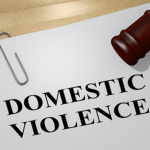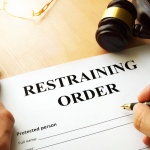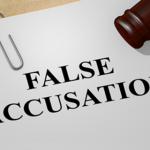Thirty Six Women Have Been Violently Killed in Australia This Year

Last Sunday, two women were killed in acts of violence perpetrated on opposite sides of the country. At around 4 am that morning, NSW police attended a Griffith residence to find 27-year-old Nicole Wetzler dead in a rear shed on the property.
A few hours later 35-year-old Ashley Alchin was arrested and taken to Griffith police station, where he was charged with breaching a domestic apprehended violence order.
WA police discovered 48-year-old Michelle Peterson dead at her Ellenbrook house, along with the body of her 8 year-old-son and her critically injured daughter in the backyard. The 15-year-old girl died en route to the hospital.
Ms Peterson’s older son Teancum Petersen-Crofts, whom police had already arrested at a convenience store at around 1.30 am that morning, has been charged with the triple murder.
While a little over a week before, on 7 July, three women were murdered in separate incidents allegedly by men known to them. Indeed, since 1 June this year, nine women have been murdered nationally in violent attacks.
And according to the Counting the Dead Women Australia project researchers at Destroy the Joint these deaths take the number of women violently killed in Australia this year to 36.
However, despite this national epidemic of violence against women, governments around Australia simply look the other way for the most part, preferring to focus on enacting new laws and implementing strategies to counter terrorism, which statically speaking is a much lesser threat.
A hidden epidemic
Destroy the Joint spokesperson Jenna Price explained since her organisation began collating the details of these deaths in 2012, the number of women killed violently in Australia has remained stable at one death a week – which is one death a week too many.
The reason this violence towards women continues in the community, she points out, is that “women are not valued in the same way that men are valued: gender pay gaps, opportunity gaps and access gaps.”
“When that changes, women will be safer,” Ms Price, who’s an academic at Sydney’s University of Technology, continued. “Inequality leads to violence. We need to stop inequality.”
And often the violent murders of women go unmentioned in the media. The brutal murder of 22-year-old Eurydice Dixon at the hands of a stranger in a North Carlton park deservedly gained national attention.
However, the murder of 28-year-old Campsie woman Qi Yu almost went unnoticed.
There was no national outcry over the murder of 69-year-old Caroline Willis stabbed in her Werribee home on 25 May, nor for the death of 22-year-old mother Teah Luckwell attacked in her Tamworth unit on 28 March.
A failure to address the issue
“Many have said it before me, but if this many citizens were dying because of terrorism or street violence, then politicians would be taking radical action to address the underlying issues,” said Moo Baulch chief executive of Domestic Violence NSW.
Destroy the Joint has recorded 418 women who have been killed as a result of a violent attack in this country since 2012, while the Global Terrorism Database lists only six people as having been killed as a result of a terrorist incident on Australian soil over the same period.
And while over 70 pieces of counterterrorism legislation have been passed at the federal level since 9/11, nowhere near the same level of attention has been given to the very real victims of the propensity certain members of the community have to commit violent acts towards women.
In October 2016, the Turnbull government announced its Third Action Plan, which comprised of a $100 million dollar package designed to change Australian attitudes to and tolerance for violence against women. However, Ms Baulch has described the funding as not even touching the sides.
“The lack of meaningful action by our governments on the drivers of violence against women and children is staggering,” Ms Baulch told Sydney Criminal Lawyers®. She stressed the need to examine “why the system fails so regularly,” rather than simply trying to improve the parts that don’t work.
“We are spending billions of dollars to protect our borders and we can’t invest a tiny percentage of that in adequate services to provide support to those living with terror in their homes,” Ms Baulch added.
A system screaming for reform
The Baird government implemented the Going Home and Staying Home program in 2014. This so-called reform resulted in a large number of women’s refuges and specialty services being closed down, which has left women fleeing domestic violence with a dearth of options.
And as Ms Price explained in the Sydney Morning Herald on 3 July, there is now a huge demand for homelessness services statewide. Since the reforms came into play, this demand has increased by almost 50 percent, a third of which are women and children trying to escape family violence.
Australian Bureau of Statistics figures reveal that in 2017 there were 366 victims of domestic and family violence assaults per 100,000 people in NSW. And 63 percent of the female victims of these assaults reported them being perpetrated by an intimate partner.
“We need societal change, which means addressing inequality early,” Ms Price made clear. “It also means we need to teach small children how to deal with conflict early.”
As far as Ms Price is concerned, the “judicial system needs an overhaul.” She stated that this is “going to be brought into sharp relief when changes to the Family Court,” announced by Australian attorney general Christian Porter in May, take effect early next year.
Although, Ms Price warned that she fears these changes “will make women and children more vulnerable – not less.”
A societal shift is needed
“Violence against women should be treated with the seriousness that it deserves,” Ms Baulch said, adding that “intergenerational change and a whole of society approach to prevention” are the only way that the “horrific statistics” are going to be brought to an end.
However, Australian politicians remain reluctant to put long-term strategies into place that can bring about significant change to attitudes and behaviours in the community that allow for violence against women to carry on unabated.
“We know now that gender inequality and violence supportive attitudes are the core of the problem,” Ms Baulch concluded. “The next step is a personal, political and institutional commitment to be part of the solution.”







